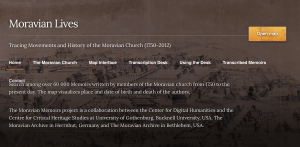Some advantages to creating a digital artifact from archival documents is that the digital artifact is more easily accessible and there is no to little risk of damaging the original artifact. Also, some documents could be written in handwriting that is hard for people of the twenty first century to follow along with, so a transcription will make it easier for users to actually read old documents. Additionally, these tools can help with, what Whitley calls, distant reading, which helps identify the overall interconnection between data. Once there is a transcription available you can use tools to manipulate and analyze the text for patterns that may not be obvious to the naked eye. Some of the disadvantages of digitization are the time and money that goes into the process of creating the digital artifacts. In addition, there is maintenance and upkeep involved in preserving these documents digitally. Technology is advancing all of the time, so it’s important to keep these sites updated. I noticed that The Moravian Lives project is similar to other large

-scale DH projects in a few ways. Both Moravian Lives and Old Weather has a place where people can get involved and transcribe materials themselves. Similar to the Jane Austen Manuscript project, you can access documents that were already transcribed and you can view the transcription and pictures of the original document. Also, the Quantifying Kissinger and Moravian Lives projects both have visualization maps that help people actually see the connections between the data. Yes, society as a whole is interacting with textual material on screen more than on the printed page. With the advancement of technology we have more accessibility to information and digital artifacts than ever. Research practices are changing because of this technology. Instead of looking up where a resource is located and dealing with the hard copy, now we can just look up whatever we need online and more often than not we will be able to find what we’re looking for. Open-source and free digitized materials offer new

pedagogical opportunities. For example, we can take the digitized data and approach it a different way by using visualization tools. According to Whitley, these digital tools and visualizations produce more questions and problems than answers; this leads to an even deeper analysis of the data. Students can reference and compile information from artifacts and centuries old documents that are located across the globe because they have digital access to them. According to Whitley, serendipitous discovery is possible in digital and physical form. In physical form, your perspective could be widened by a newspaper for example. Your eyes are drawn to different articles across the page prompting you to make new discoveries. On a digital platform, a search engine could help the user serendipitously find information that they might not have found on their own. Overall, all of these DH projects use tools that Whitley claims will, “challenge us to read texts differently than we otherwise would.”
Jessica Hom is currently a sophomore at Bucknell University. At Bucknell, she plays on the varsity softball team and is currently undeclared. She is from Syosset, NY and is a graduate from Syosset High School.
